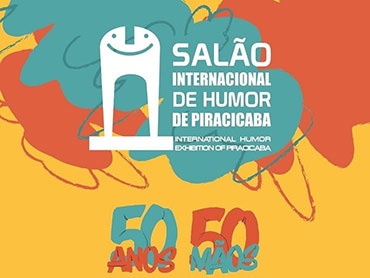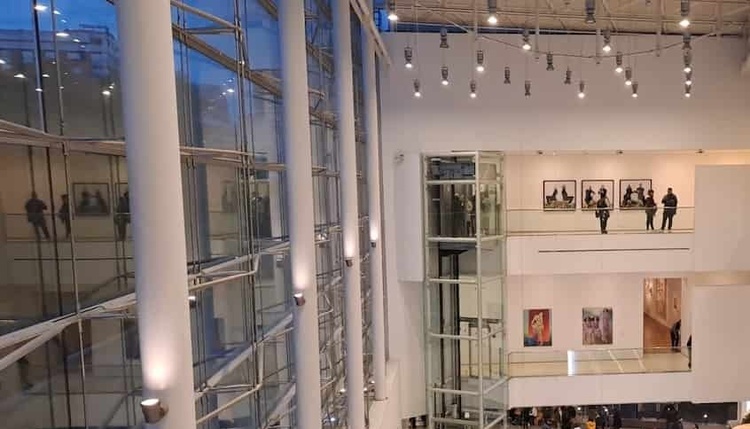
An exhibition that says nothing
“Liliana Porter. Travesía” at MALBA: an exhibition that says nothing and confirms that art can also be a gesture of comfort
MALBA plays it safe again with a polished, correct, predictable, and profoundly disconnected exhibition from the present. “Liliana Porter. Travesía” is a mirror of a banking elite that wants culture without conflict, without criticism, without risk. Harmless art for millionaires without taste, time, or street smarts.
An exhibition to say that something is being done, without doing anything
From July 12 to October 13, MALBA presents Liliana Porter. Travesía, an exhibition that reviews six decades of work by an Argentine artist who has lived in New York for more than half a century. The exhibition, presented to the public by ICBC—an international bank with VIP clientele—is another snapshot of the current state of institutionalized contemporary art in Buenos Aires: soulless, repetitive, locked in its glass tower.
The exhibition has the same packaging as always: established names, glossy catalogs, professional curation, and texts that sound important even if they say nothing. Agustín Pérez Rubio—the exhibition's curator and former MALBA curator—has put together a chronological overview that attempts to show Porter's "conceptual and formal evolution." But it seems more like a review of greatest hits carefully chosen so as not to upset anyone.
MALBA as a spa for posh sensibility
MALBA has long ceased to be a space for thinking about Latin American art in terms of conflict, shock, and question. It has become a catwalk for artists who no longer surprise anyone, except for the public who come to take selfies with sculptures, sip expensive coffee, and say they went to "an incredible exhibition."
And what does the exhibition have? Puppets, toys, vintage objects, small stage sets mounted with a naive aesthetic. Polished images that could be in any New York shop window, in a SoHo bookstore window, or on the Instagram feed of a cultural influencer. But there's no pain, no rage, no true irony. Everything seems made to please, to be beautiful, to hang in a doctor's office in Recoleta.
An artist exiled from risk
Liliana Porter, born in 1941, moved to New York in 1964. Her internationally recognized work has been exhibited in prestigious museums. But her language, which once dialogued with conceptual art, object criticism, and the use of the absurd, now appears domesticated. In this exhibition, there is no edge or context. There is no mention of the real Argentina, its upheavals, its history of repression, crisis, or struggle. It is art floating in limbo, as if time didn't exist.
One of the exhibition's central themes is the "existential absurdity," expressed through broken toys, small figures that recur as symbols of the unhinged everyday. But this absurdity ends up being a decoration without depth, a cute aesthetic with philosophical pretensions. A Beckett for a toy store. An Ionesco for Sunday brunch.
ICBC: Patron of Culture or Sponsor of the Neutral?
It's no coincidence that the exhibition was presented at an event exclusively for ICBC clients. There's champagne, catering, and speeches about "high-value cultural experiences." But what's missing is conflict, questioning, and overflowing. Art, in this format, is just another product of institutional marketing: it serves to demonstrate "cultural commitment" without implying any uncomfortable position.
The exhibition could be anywhere in the world, which isn't a merit, but rather a symptom. Uprooted, dislocated from the here and now. In a Buenos Aires falling apart, where independent artists fight for space, materials, and visibility, this exhibition appears like a glass bubble: protected, sponsored, sterile.
Where has art with thorns gone?
Let's be blunt: MALBA has become an empty consecration center. It no longer takes risks, it doesn't take a stand, it doesn't intervene in the country's social, political, or symbolic debates. It chooses artists established on the international circuit, with works that are easily digestible and ready for export.
Liliana Porter. Travesía offers nothing that shocks the viewer. It doesn't challenge, it doesn't hurt, it doesn't leave open questions. What we have is a selection of beautiful works, well-staged, perfectly explained. But art that doesn't disturb dangerously resembles entertainment.
And the audience?
Among the works, executives, influencers, art students, and high-society women stroll. Many don't know Porter. Some are taking selfies. Others read curatorial texts as if they were instructions for understanding a conceptual appliance. The museum doesn't invite dialogue, but rather passive consumption.
Read more
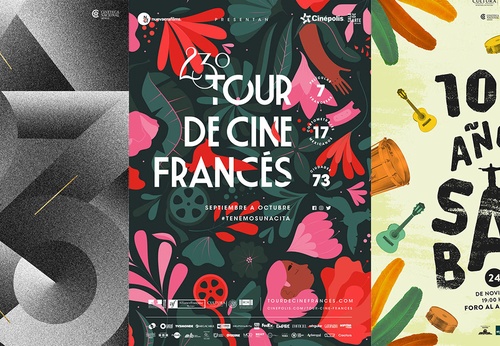
- November 27, 2025
Gallery of Poster Design by Jorge Mares – Mexico
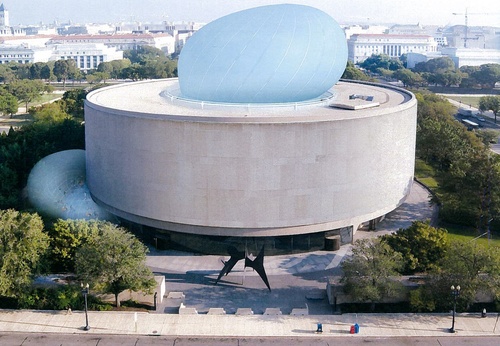
- November 27, 2025
New Curatorial Discourses in Latin America

- November 27, 2025
Printmaking and its Tradition in Mexico and Chile



- November 27, 2025
Javier Muñoz - Argentina

- November 27, 2025
Cristóbal Herrera-Ulashkevich | Cuban-Born Photographer
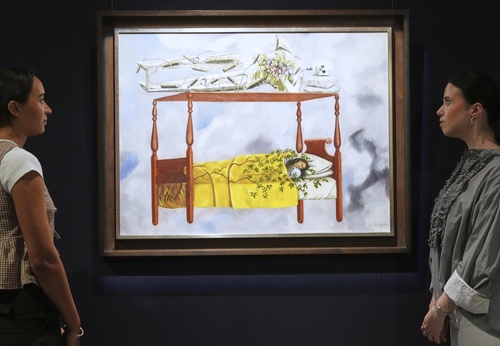
- November 26, 2025
Frida Kahlo Breaks World Auction Record

- November 26, 2025
El Dorado | Painting Exhibition by Enriquestuardo Alvarez from Ecuador

- November 26, 2025
Frida Kahlo Breaks World Auction Record

- November 23, 2025
Latin American Abstract Painting: From …

- November 23, 2025
Pinta Miami Celebrates 19 Years of Lati…

- November 23, 2025
Upcoming Kahlo auction could fetch up t…

- November 20, 2025
An auction in Bogotá

- November 20, 2025
Klimt Breaks Record at Sotheby’s

- November 19, 2025
Pinta Miami celebrates its 19th edition…

- November 18, 2025
Artists and galleries from Brazil and L…

- November 17, 2025
"Painting in Mexico Today Is More Alive…

- November 17, 2025
Paris Photo Exhibits Iconic Collection …

- November 16, 2025
Art Exhibition in Bogotá

- November 15, 2025
Frida Kahlo's 'The Dream (The Bed)' Exp…

- November 12, 2025
Brescia, an exhibition of works by the …

- November 12, 2025
Uruguayan Artist Joaquín Torres García …

- November 11, 2025
Painting in Mexico Today Is More Alive …

- November 11, 2025
Oaxacan School Dominates Latin American…

- November 10, 2025
Artweek 2025 Celebrates a Decade of Art…

- November 10, 2025
Pop Brasil Arrives at Malba with Over 1…

- November 10, 2025
Adriana Cisneros Pays Tribute to Latin …

- November 10, 2025
Mira Art Fair 2025

- October 08, 2023
Illustrations reflect the brutal Israel…

- December 25, 2023
The jury statement of the Iran-Brazil F…

- July 29, 2023
History of Caricature in Brazil

- March 21, 2024
The history of art in Palestine

- September 01, 2023
Neural Filters in new photoshop 2023

- May 22, 2025
Brady Izquierdo’s Personal Exhibition O…

- April 20, 2024
Poignant Image of Grief Wins Mohammed S…

- June 29, 2024
Exhibition at Centro MariAntonia contra…

- October 21, 2023
Erick Meyenberg and Tania Ragasol at th…

- February 18, 2024
7 Ways to Understand What Visual Arts A…

- May 15, 2024
Eleven murals for Gaza painted across t…

- August 09, 2023
Venezuela mural expresses solidarity wi…

- March 30, 2024
illustration websites in Latin America

- March 14, 2024
museum of statue of van gogh

- March 15, 2024
museum of sculpture of Salvador Dali

- May 20, 2024
Latin American Festival of Performing A…

- May 25, 2025
Bordalo II to hold exhibition in Paris …

- October 23, 2023
Photos by José Luis Díaz of the march o…

- May 27, 2025
Works by Botero, Grau, and 80 other imp…

- December 01, 2023
Latin American International Graffiti F…

- May 15, 2024
Eleven murals for Gaza painted across t…

- February 18, 2024
7 Ways to Understand What Visual Arts A…

- January 02, 2025
13 commemorations that will mark the cu…

- October 17, 2023
The influence of Latin American artists…

- February 03, 2024
THE HISTORY OF NAIF ART

- October 08, 2023
Illustrations reflect the brutal Israel…

- July 02, 2024
One of the largest urban art galleries …

- November 17, 2023
Fernando Botero's work is booming after…

- July 29, 2023
Piracicaba International Humor Exhibiti…

- November 06, 2023
Heba Zagout: Palestinian artist murdere…

- December 25, 2023
The jury statement of the Iran-Brazil F…

- December 10, 2023
Sliman Mansour and Palestinian art on t…

- February 01, 2025
A maior exposição de Botero em Barcelona

- March 14, 2024
museum of statue of van gogh

- March 21, 2024
The history of art in Palestine

- July 20, 2024
First International Mail Art Biennial 2…

- April 20, 2024
Poignant Image of Grief Wins Mohammed S…

- October 30, 2023
Palestinian turns images of the Gaza co…

- September 01, 2023
Neural Filters in new photoshop 2023

- February 08, 2024

